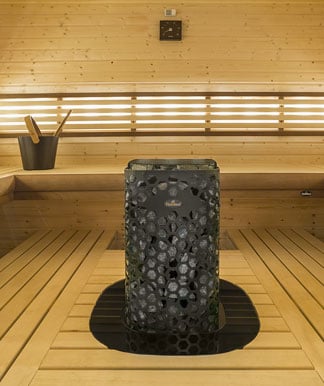5 Easy Facts About Traditional Sauna Described
5 Easy Facts About Traditional Sauna Described
Blog Article
The Definitive Guide for Traditional Sauna
Table of ContentsTop Guidelines Of Traditional SaunaThe Greatest Guide To Traditional SaunaGet This Report about Traditional SaunaThe Main Principles Of Traditional Sauna
The majority of the weight shed in a sauna is water loss and is re-gained upon rehydrating. However, without a doubt sauna can be an integral part of a healthy weight-loss program. To consider the differences between standard and IR saunas, I will separate these right into proven, academic, and made differences.Hence, the most popular factor in the saunawhich is at the ceiling directly over the sauna heateris generally in between 185 and 190 F. Traditional Sauna. Claims that a traditional sauna exceeds 200 F is simply not real and not suitable for electric saunas marketed in the United States. The temperature for a far-infrared sauna is typically set in between 120 and 140 F; nevertheless, unlike the conventional sauna, the goal in and IR area is not to attain a high temperature level
As a result of this, the temperature difference is practically irrelevant, given that excessive sweating results in both sauna kinds, yet the method of heating up the body is different. In an IR sauna the bather will feel hot and will sweat profusely, but at a lot lower temperatures. Thus, if the objective is to invest longer periods of time in the sauna, the IR sauna is a good option.

Rumored Buzz on Traditional Sauna
When the heat is attained, the elements cycle on and off to maintain the high temperature. Many standard sauna individuals enjoy putting water over the rocks to produce vapor to elevate sauna humidity degrees. The advantages of putting water over the rocks consist of: making the space a lot more comfy, dampening the nasal passages, and enabling the use of aromatherapy by mixing vital oils with the water.
In a far-infrared sauna, the warmth waves penetrate the body to efficiently heat up the body and increase the body core temperature. To accomplish this enhanced temperature, Far-infrared emitters produce infrared power which is close to the same wavelength as that which the body naturally emitsoften described as the "Crucial Array" of 7 to 14 microns), so the energy is well received by the body.
When the power goes into the body, it triggers the body temperature to boost and eventually leads to perspiration. In an infrared sauna it's essential for the emitters/heaters to remain on practically continuously. Since there is no mass of rocks to retain warmth, the sauna will certainly cool down if the emitters closed off.
As stated over, the sauna bather in an infrared space intends to position himself before running emitters to get maximum take advantage of the warm. The heating time for both rooms can be very different, depending upon just how the rooms are utilized. For a traditional sauna, a bather ought to permit 30-40 minutes for the room to accomplish a desired temperature and to properly pre-heat the rocks.
Not known Details About Traditional Sauna
A well created sauna will generally accomplish a temperature level of 150-160 F in concerning 30-40 mins. For hotter temperature levels, the room may need to warm for a longer duration.
To some, 15 mins was "thrown away" while the infrared energy warmed the wood panels as opposed to heating up a body, while others discover a pre-heated area to be much more comfy and think a raised beginning temperature level is necessary to begin perspiring. The length of recommended use for every space is around the exact same (10-15 mins per session); nevertheless, as a result of the reduced air temperature levels and the capability to really feel the impacts of infrared warm quicker than a typical sauna, it is not uncommon for an individual to spend an overall of 20-30 minutes in an infrared sauna.
Conventional saunas have a tendency to be larger (hence use more electrical power) than infrared saunas, although conventional saunas are certainly available in one and two individual dimensions also. For a two-person conventional sauna, 5x6 or 5x7 dimension is most click this site prominent. The leading bench can pleasantly seat 2 or three people and is additionally enough time to relax during more tips here the sauna session.


The typical price per kWH of electrical energy in the U.S. is about $0.11, so a 4.5 kW heater will certainly cost approximately $.50 to compete one hour, if the heater runs constantly for one hour. Usually a sauna heater will compete 75% of the very first hour and 50% of succeeding hours on because the components cycle once the set temperature level is achieved.
The Ultimate Guide To Traditional Sauna
A two individual far-infrared space is normally physically smaller sized than a traditional sauna, usually about 4' x 4' or smaller. The IR heater is commonly 1.5-1.7 kW making use of a 120 volt 15 amp plug-in solution. Since the room can be utilized faster than a sauna try here area, we will certainly think the room is utilized for to of an hour including warm up time.
Finally, there is a rarely reviewed difference in the social experience between the two spaces. While our society has actually shed several of the social advantage of the typical sauna experience, it can be really socially fulfilling. From family members time in the sauna, to heart-felt discussions with substantial others, to sauna partiesthe traditional sauna experience can lead to intimate socializing.
Most higher end infrared rooms include colored light treatment, audio systems and full-glass fronts.
Report this page